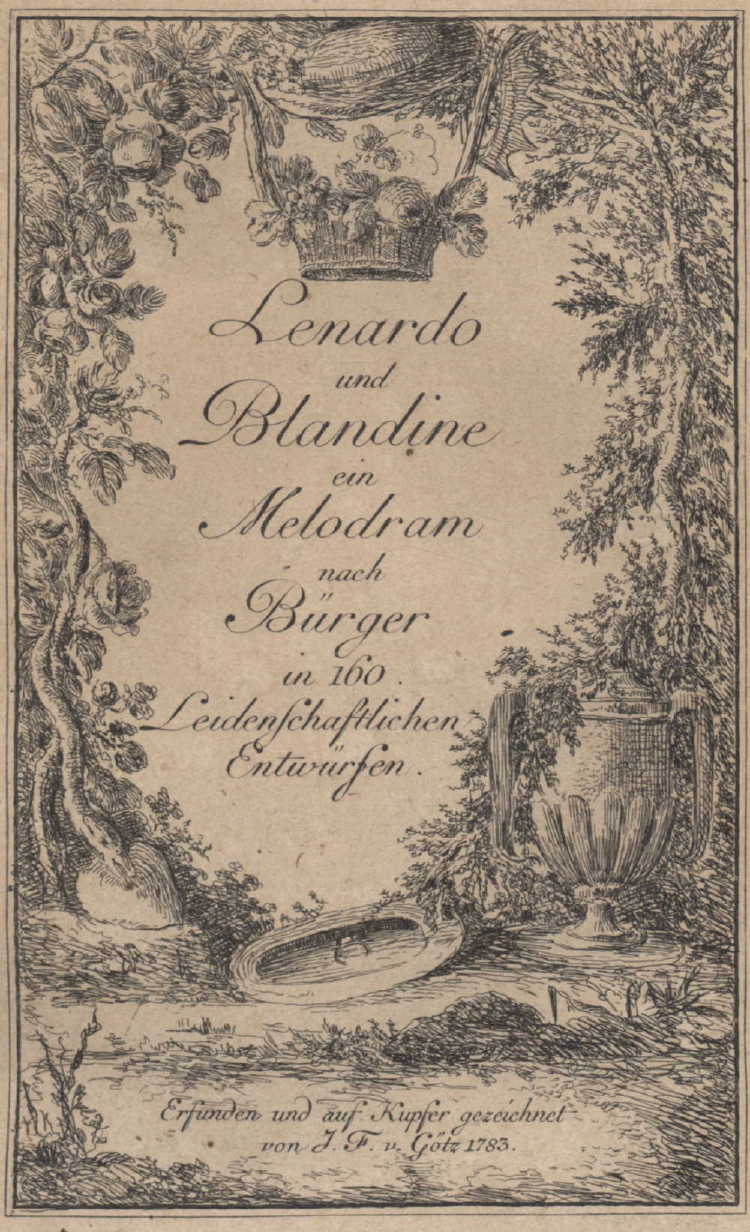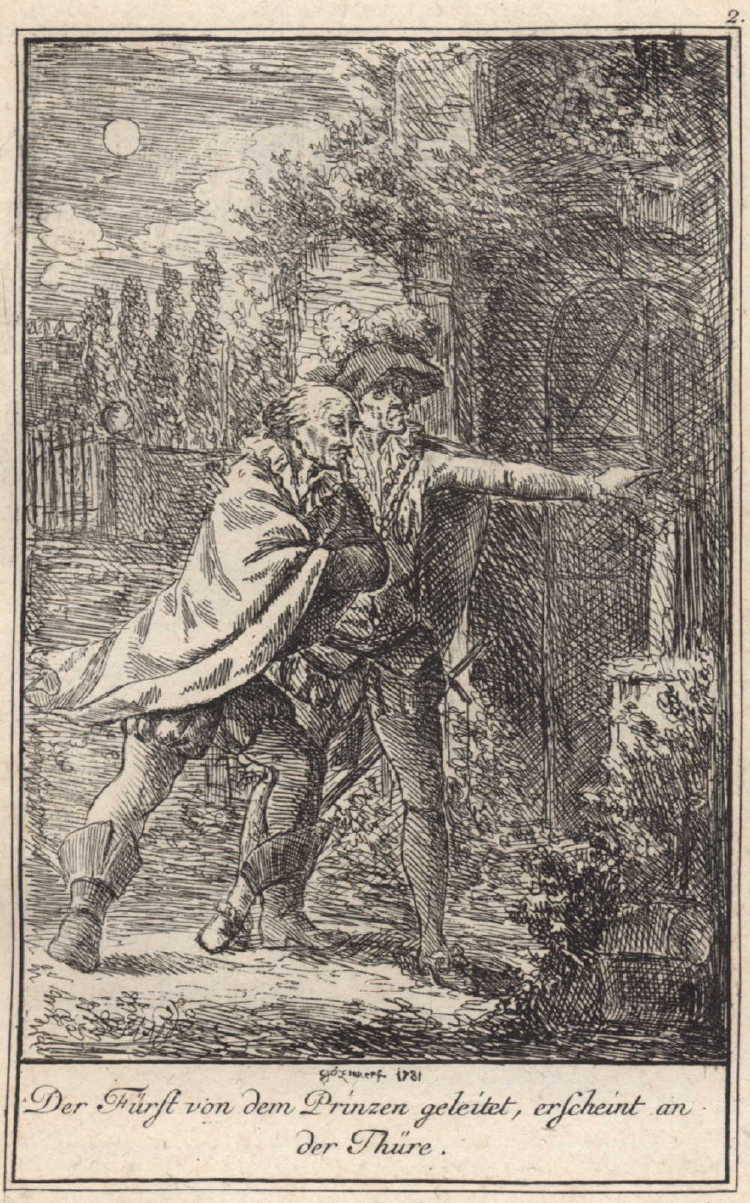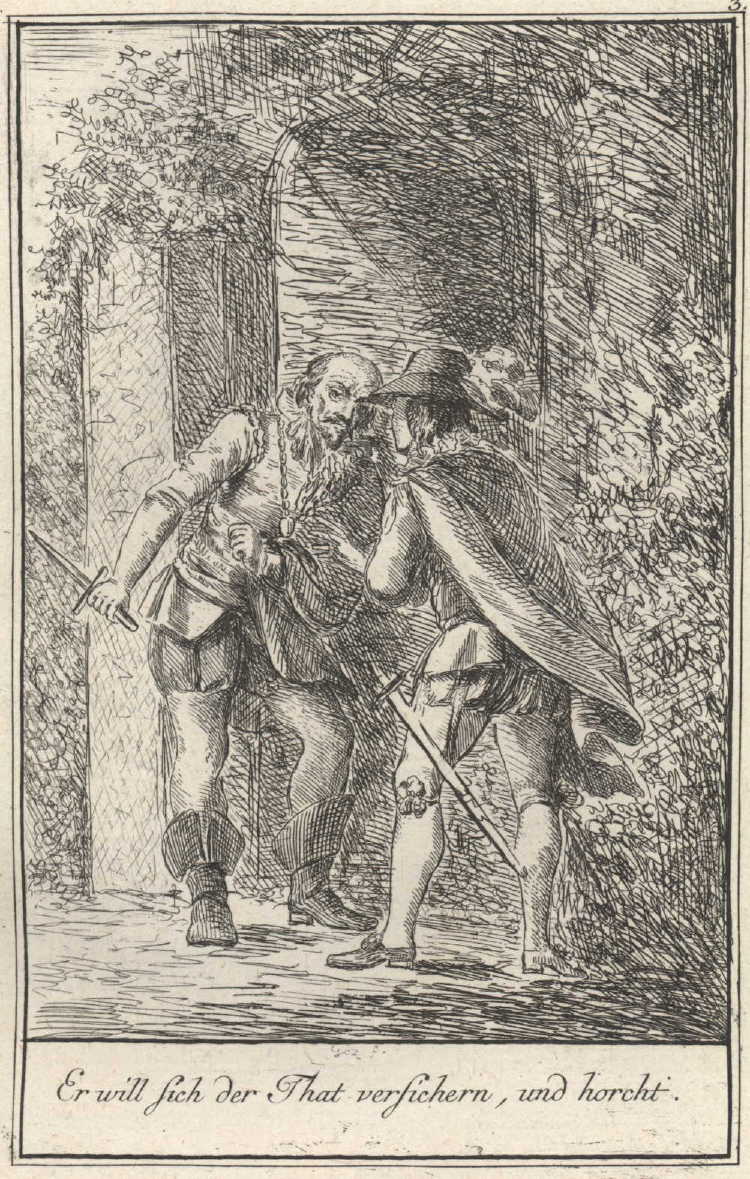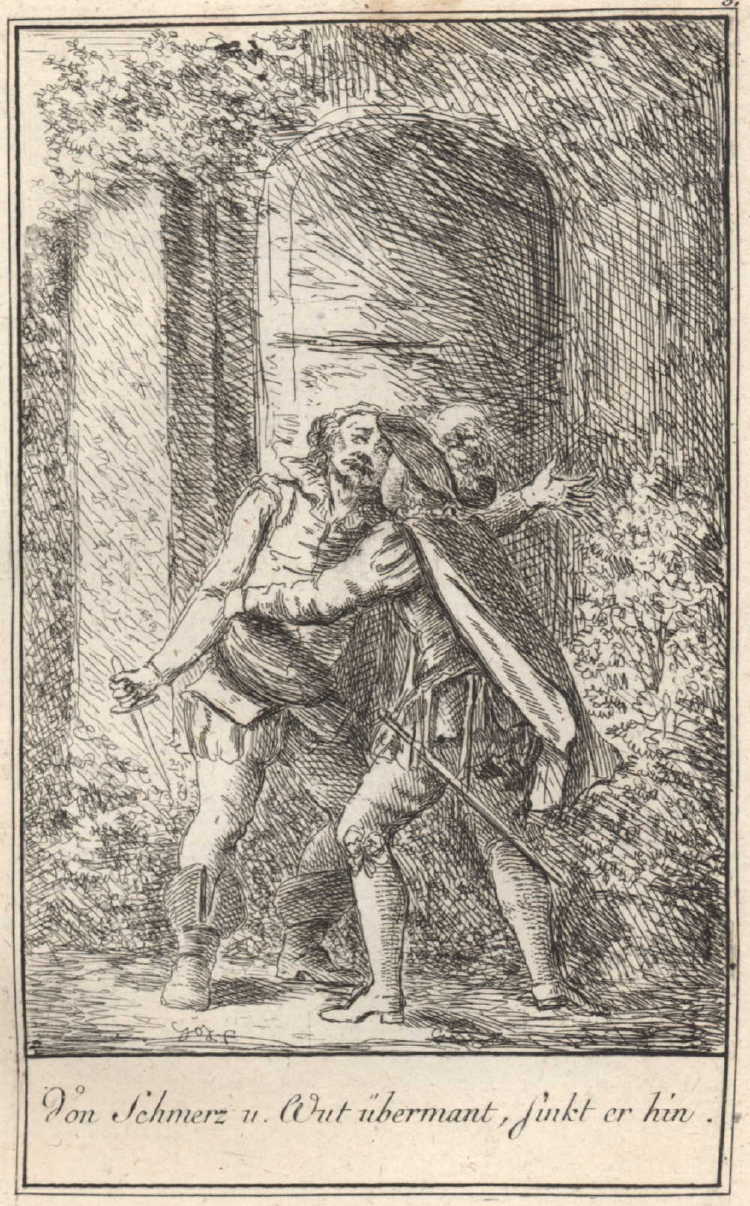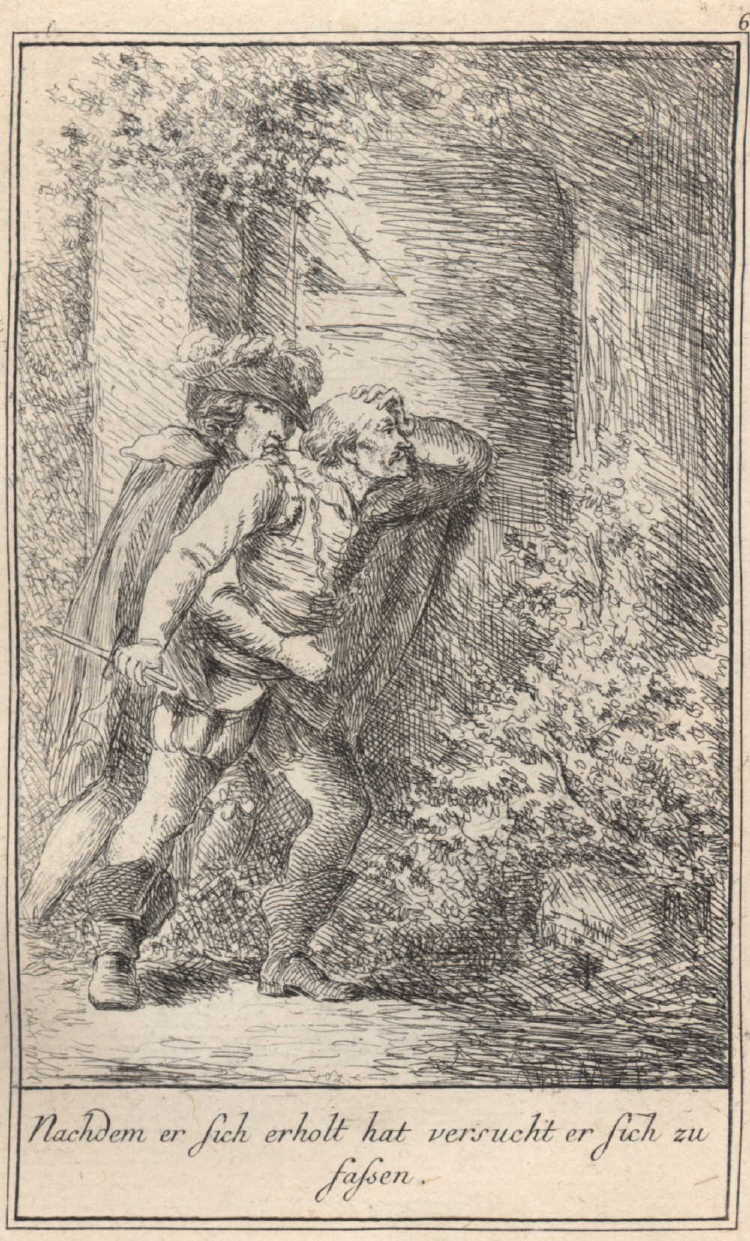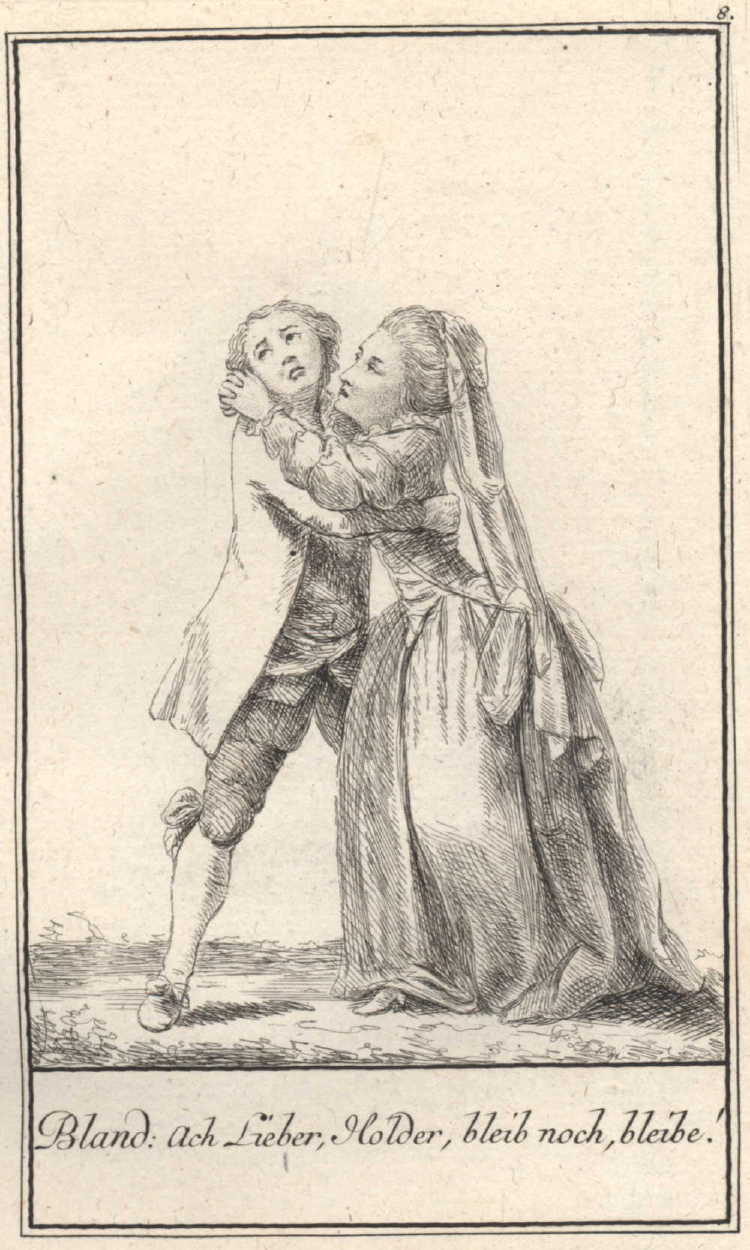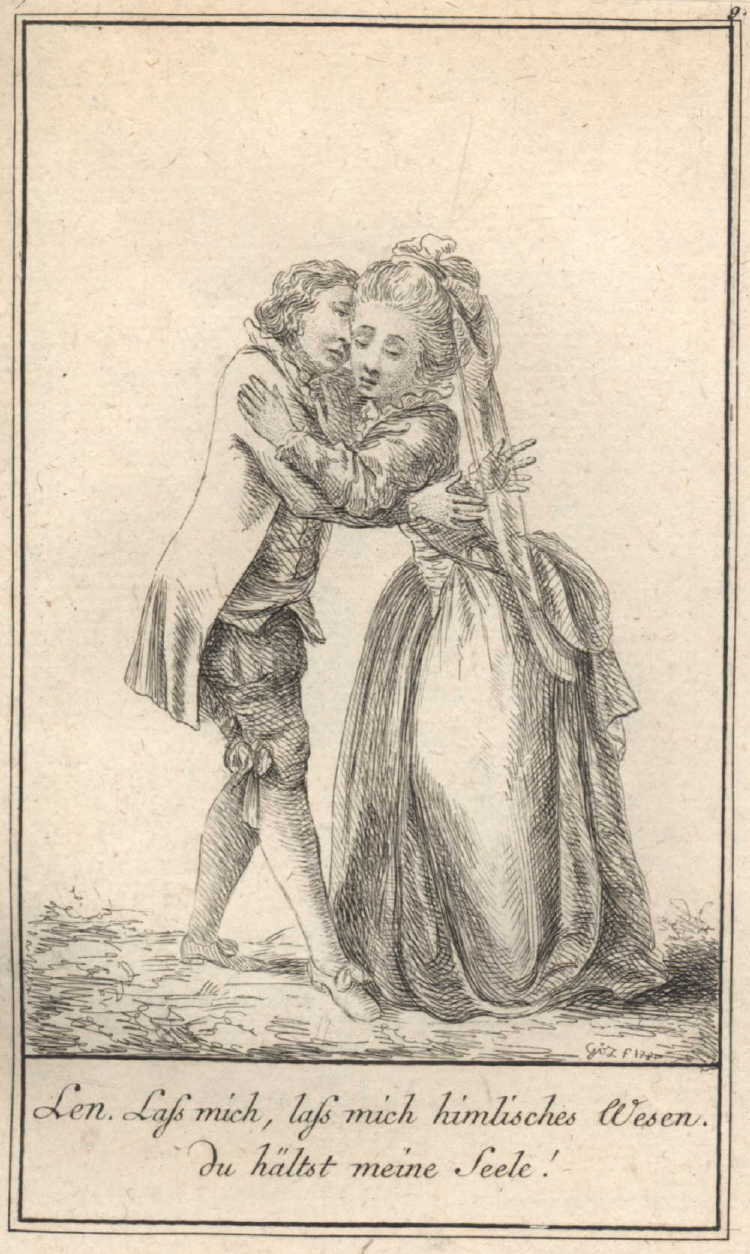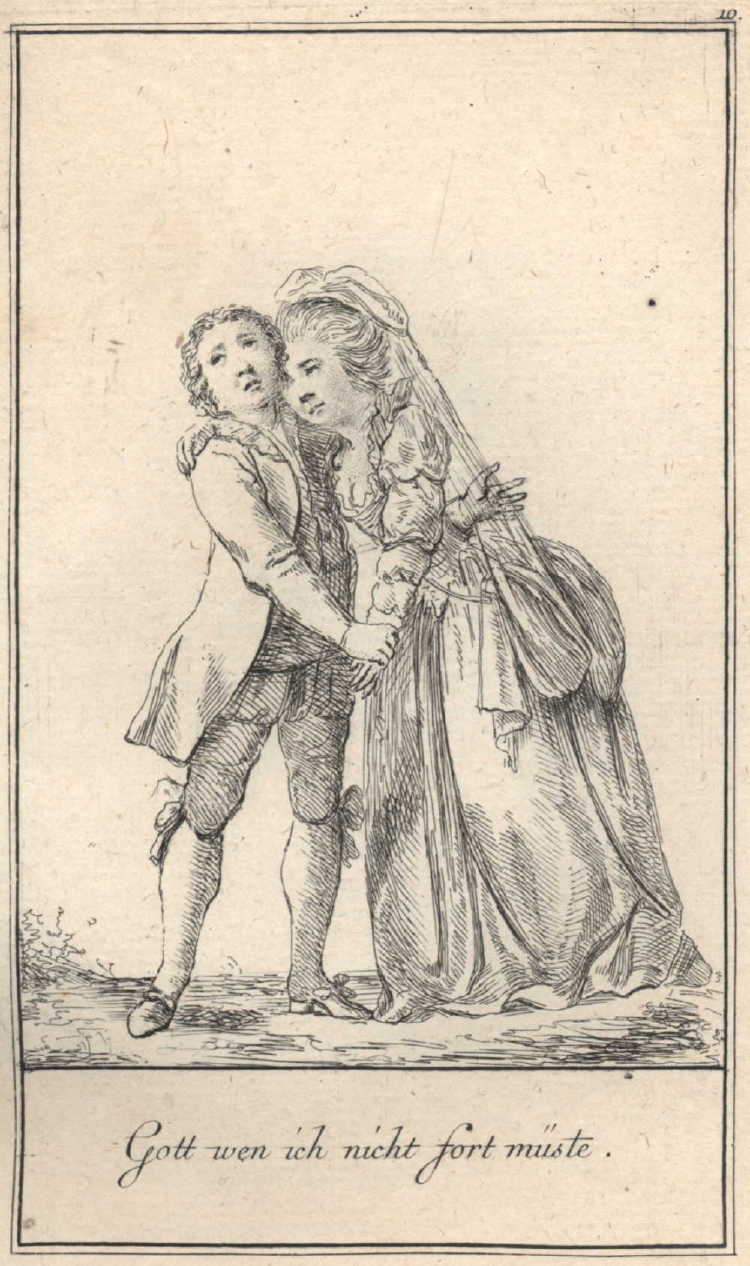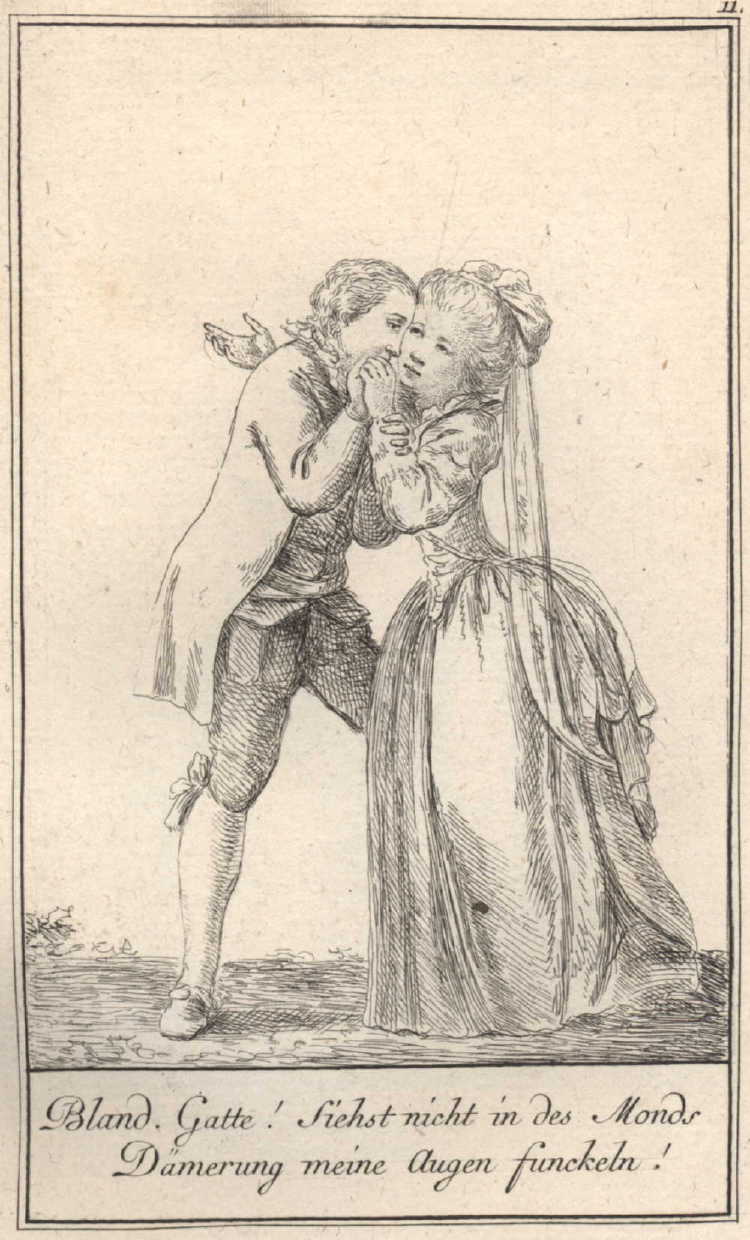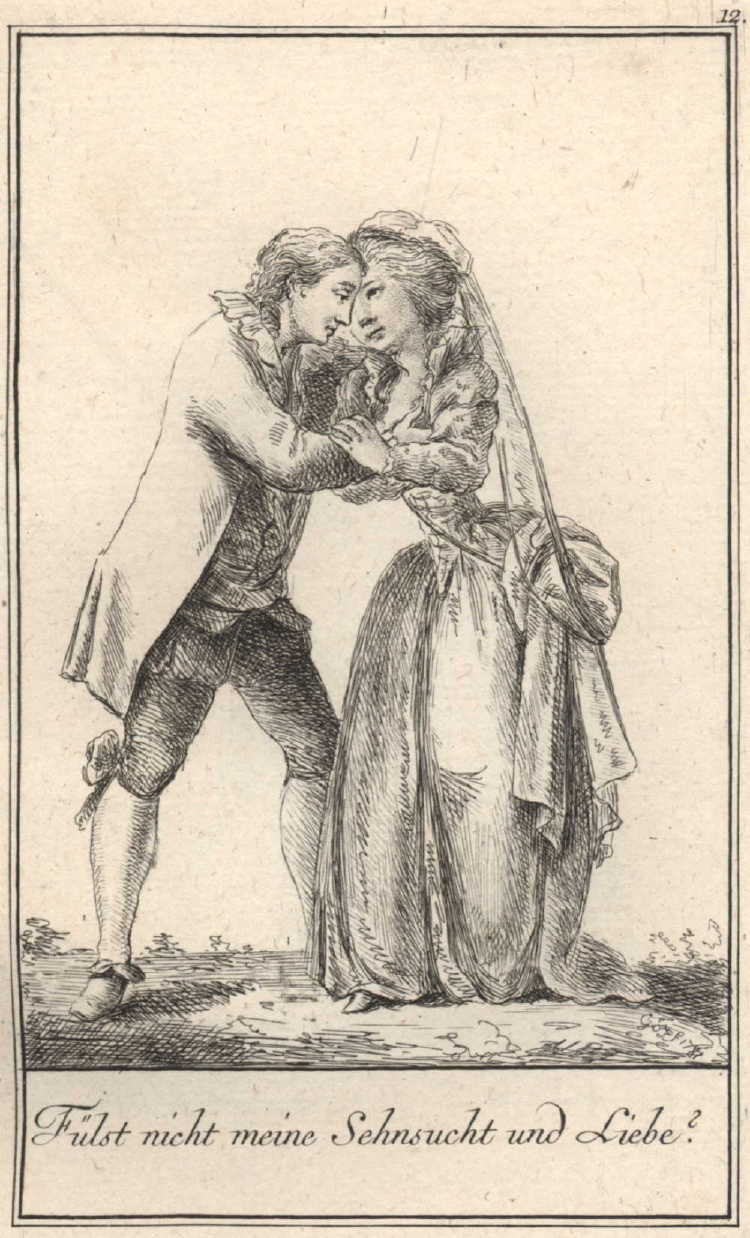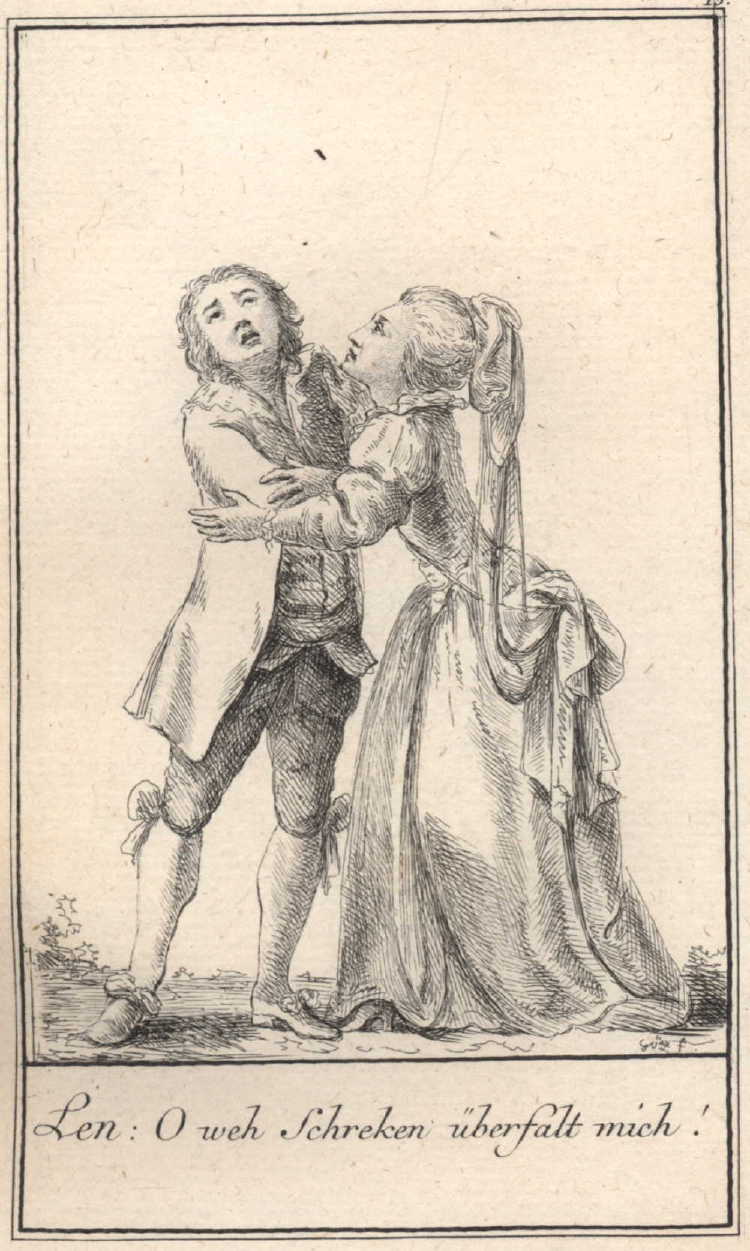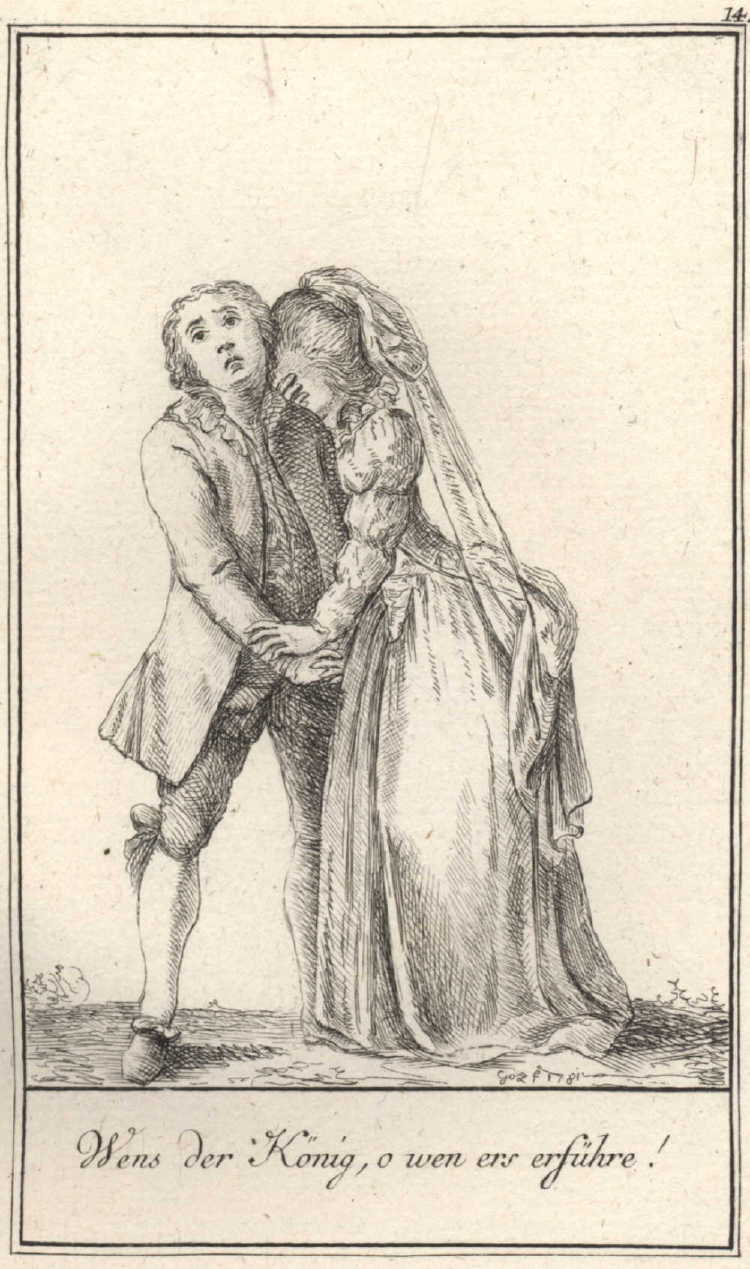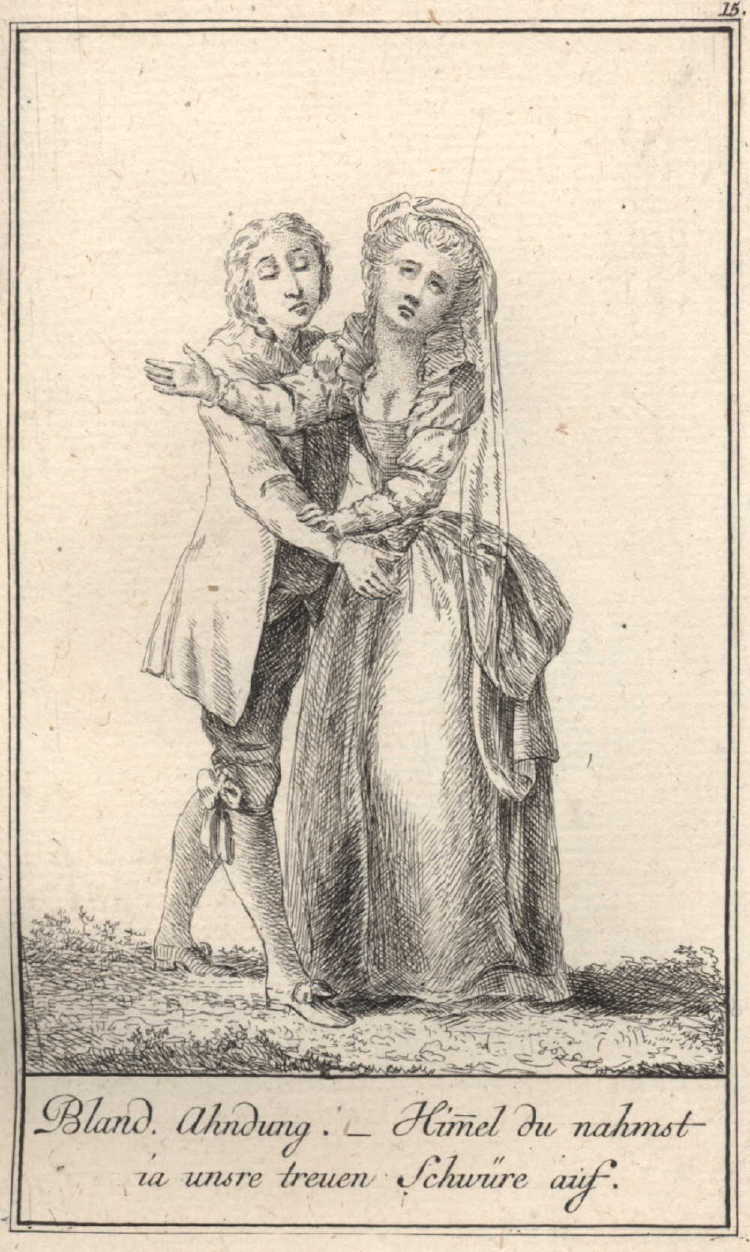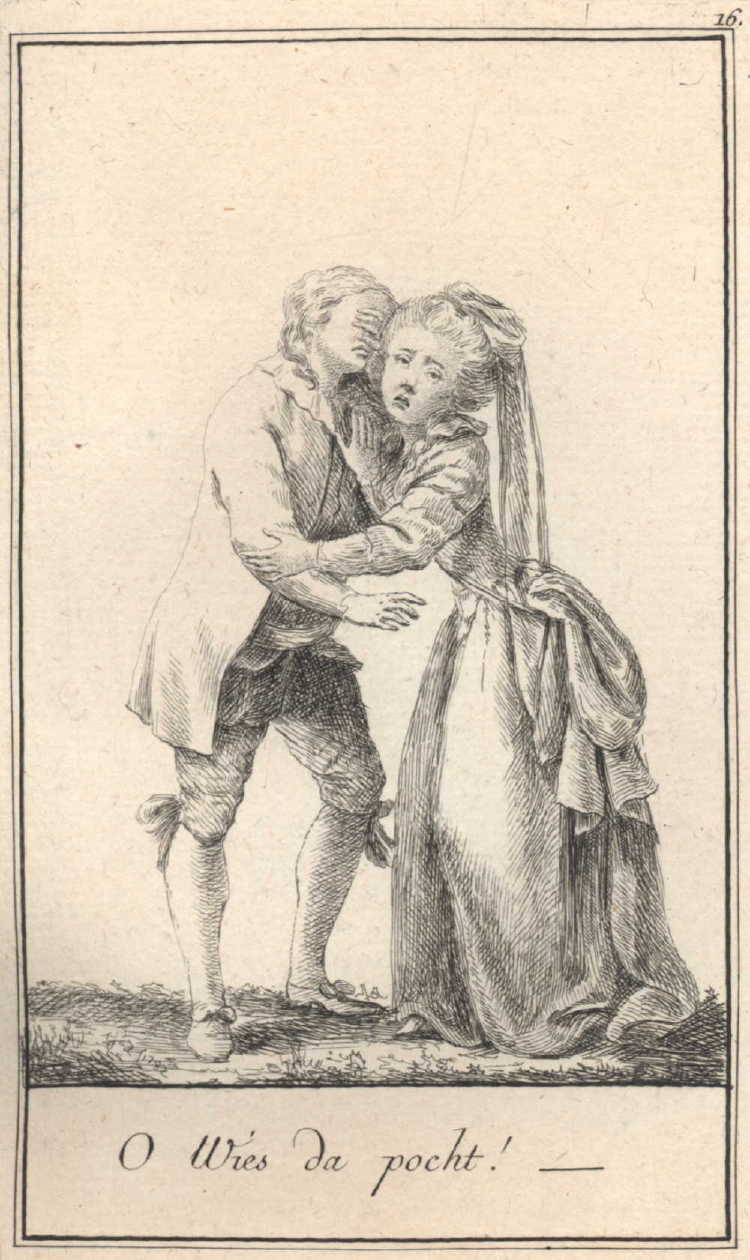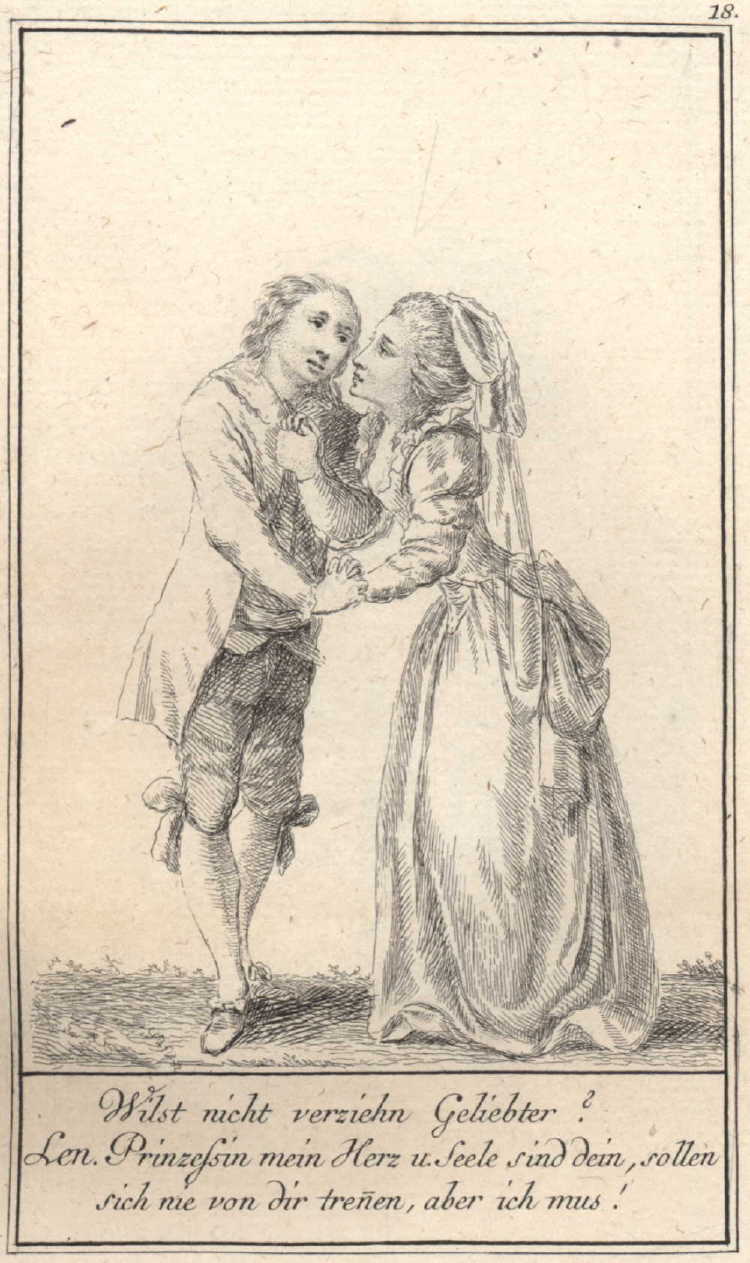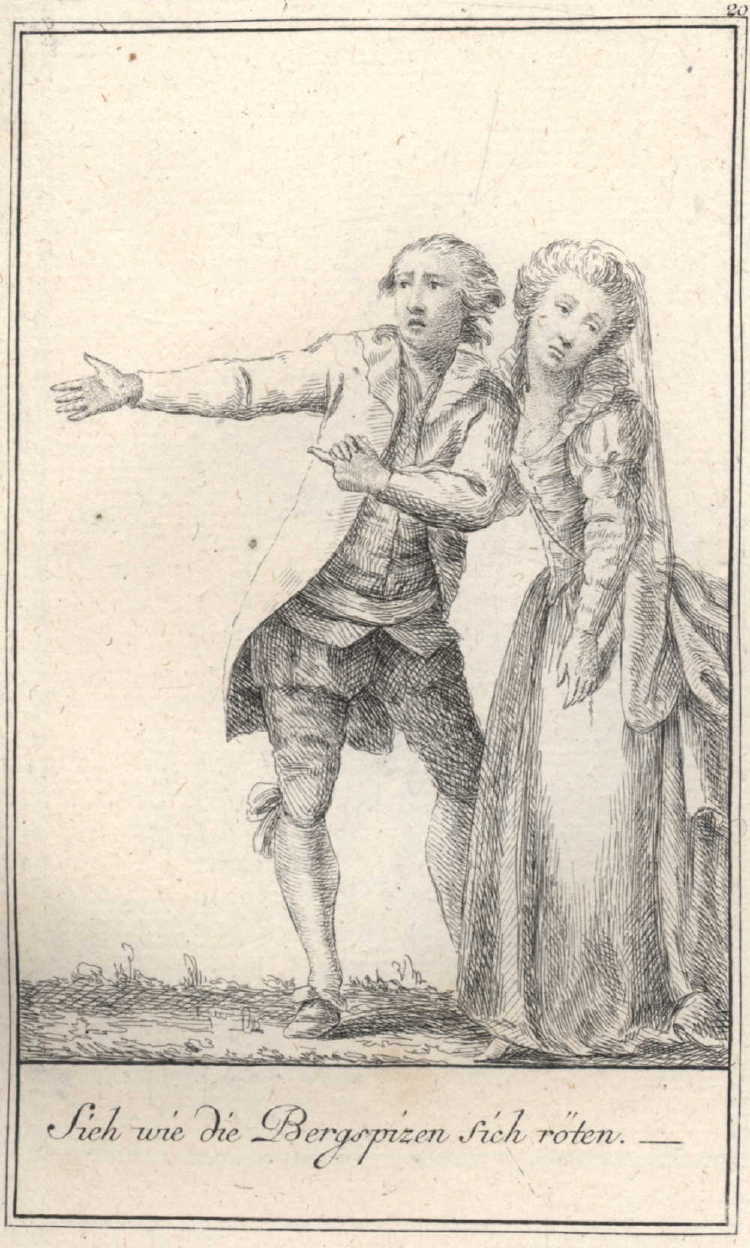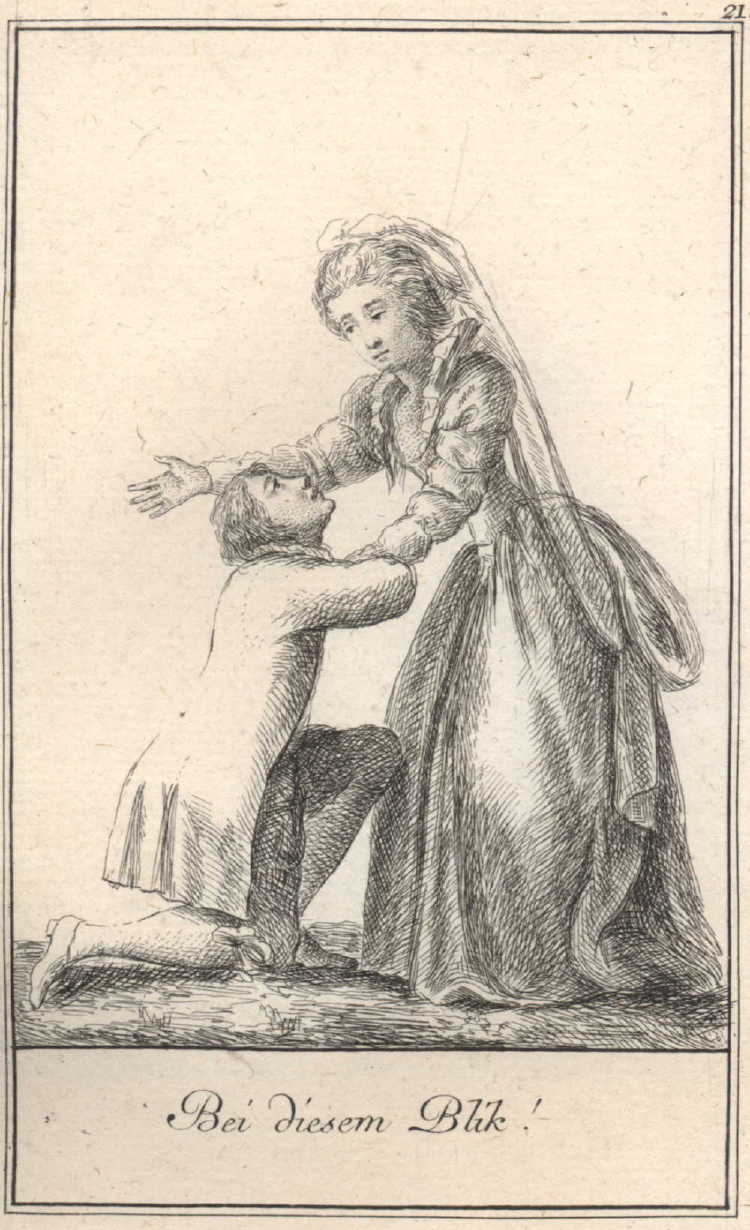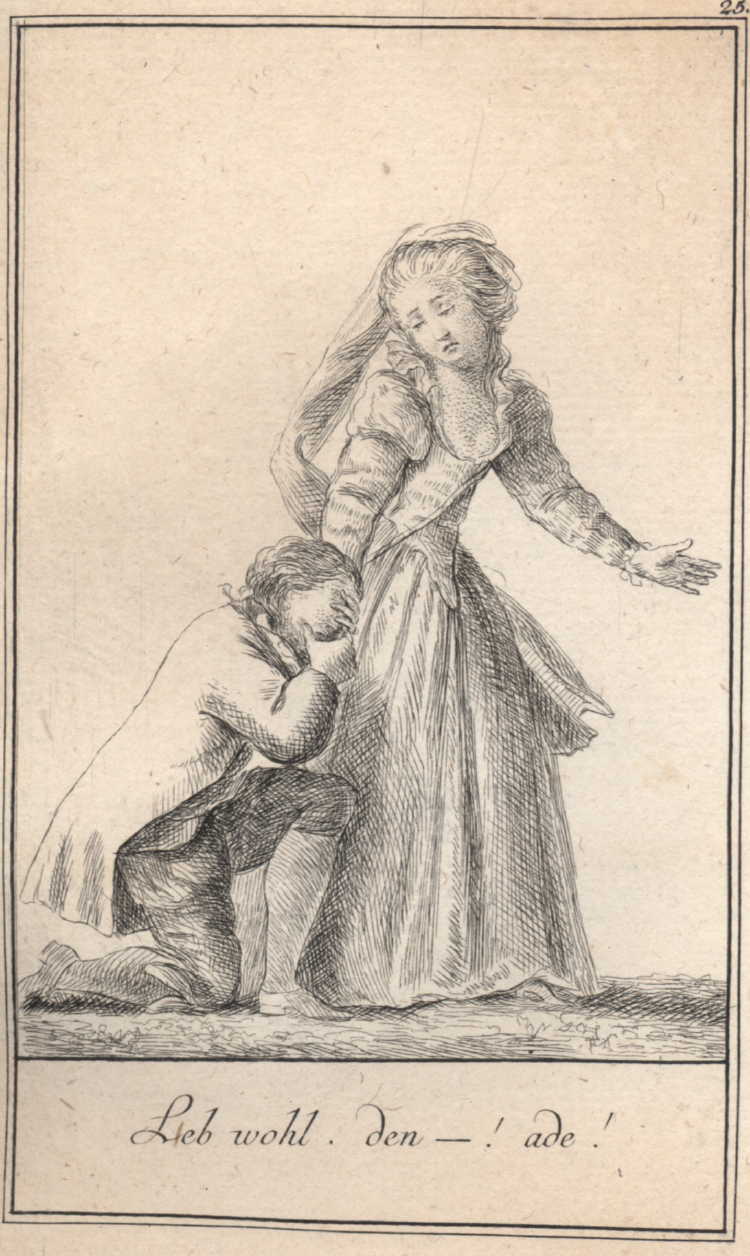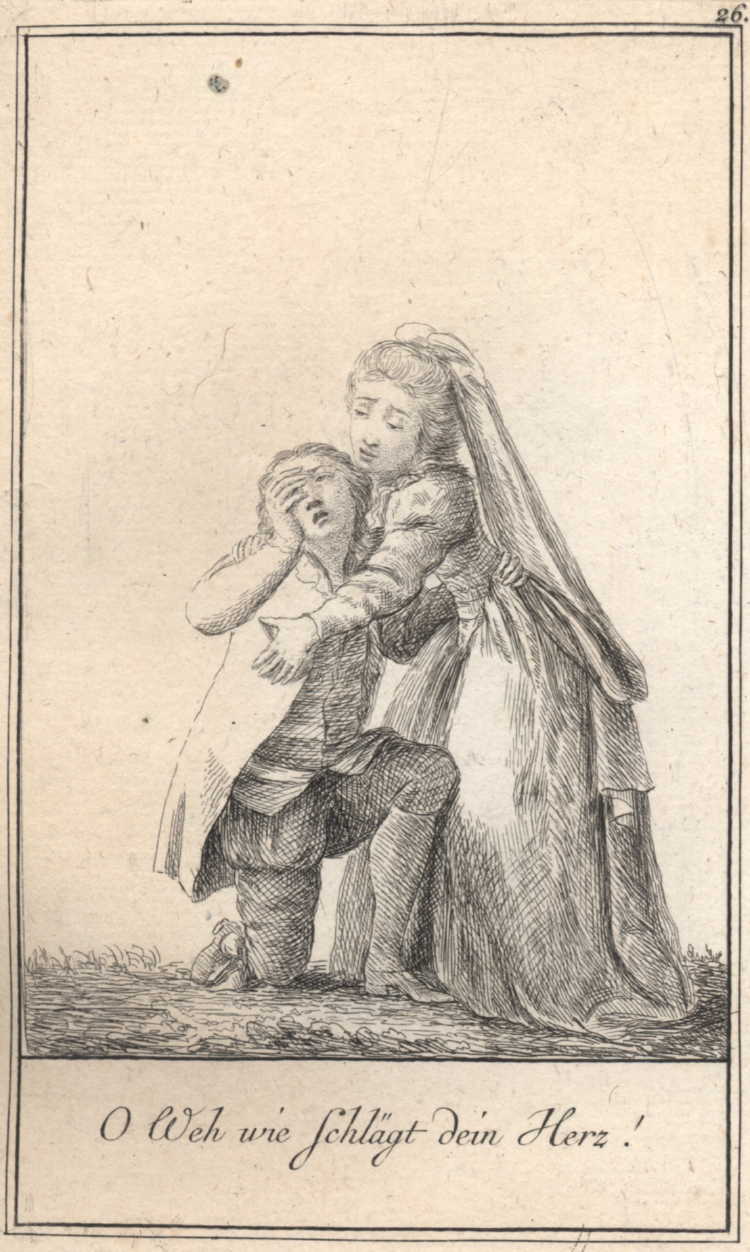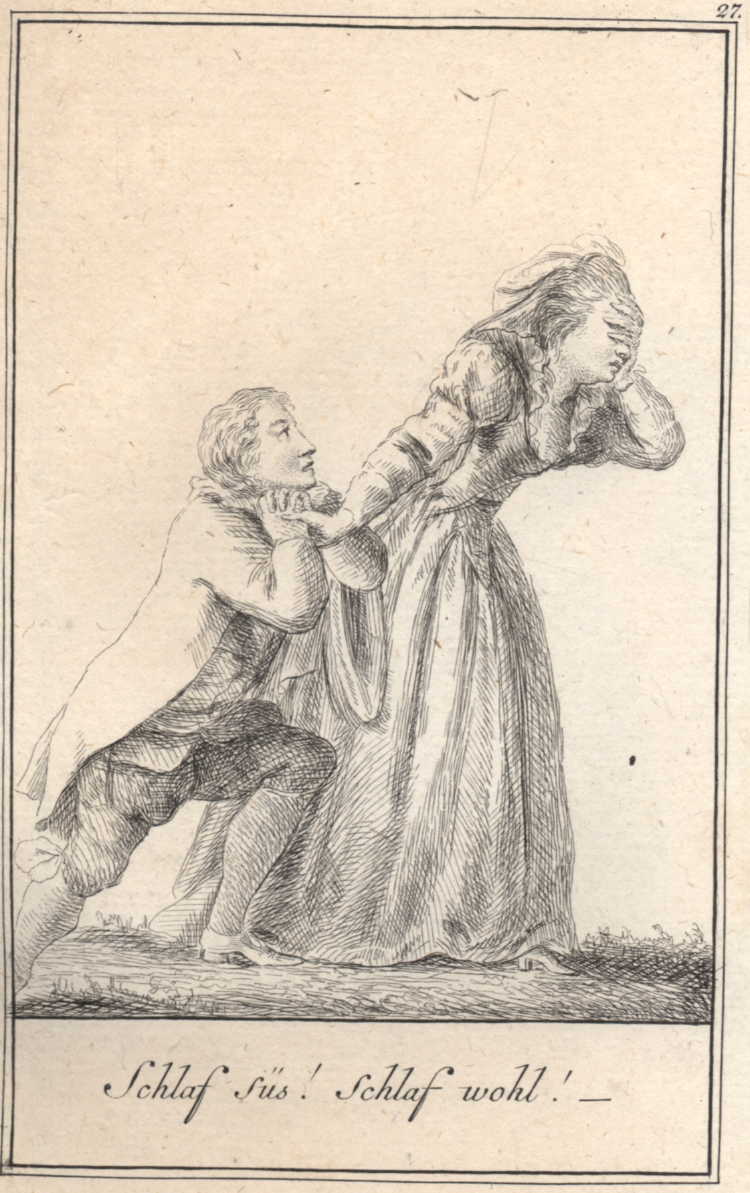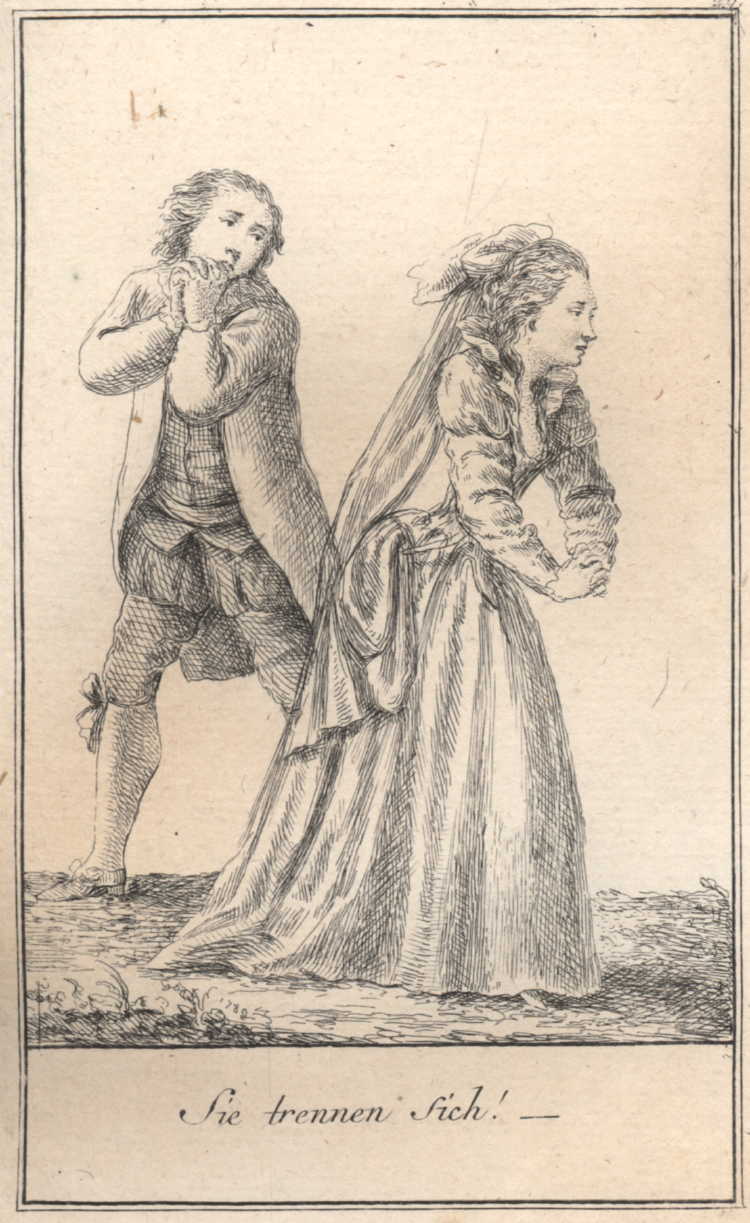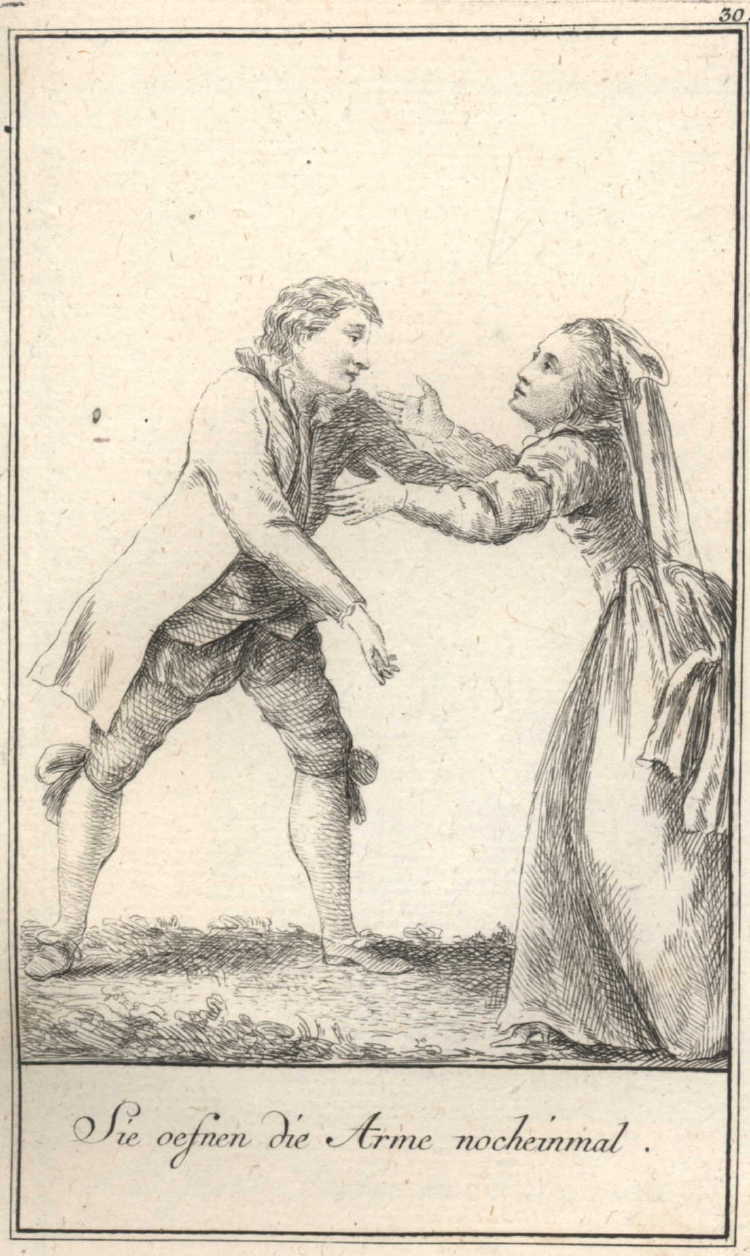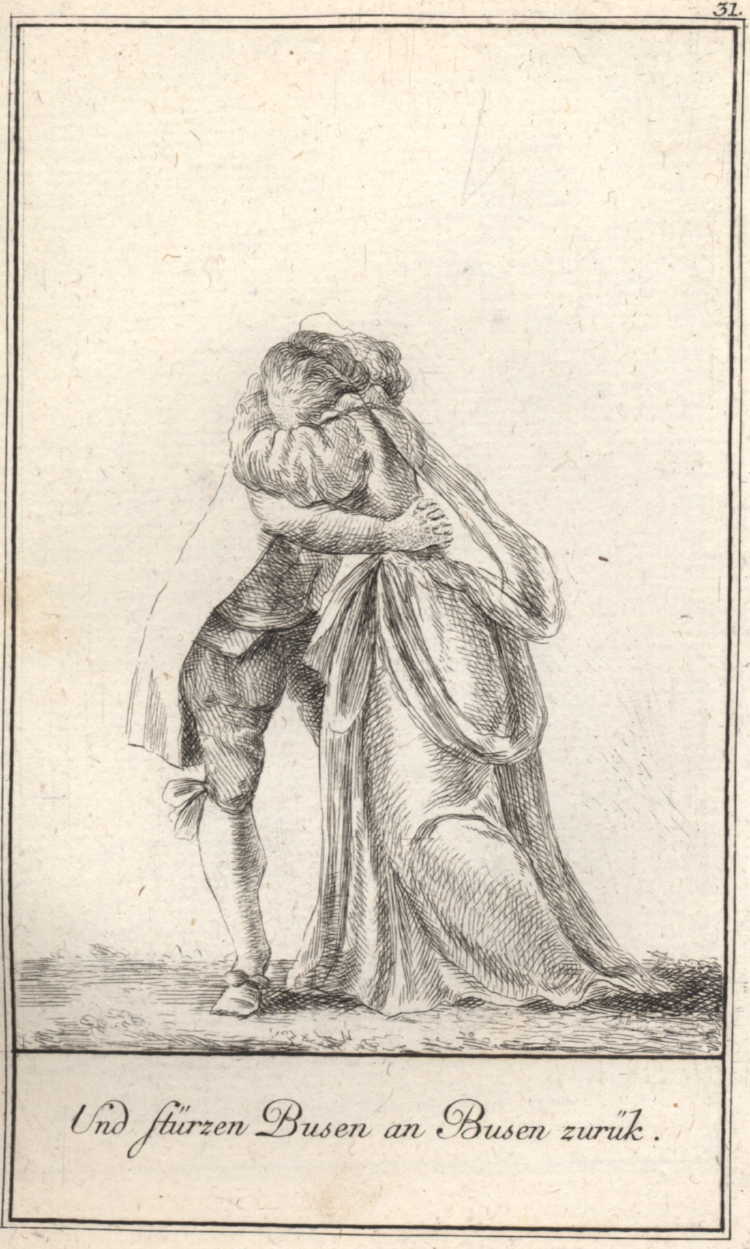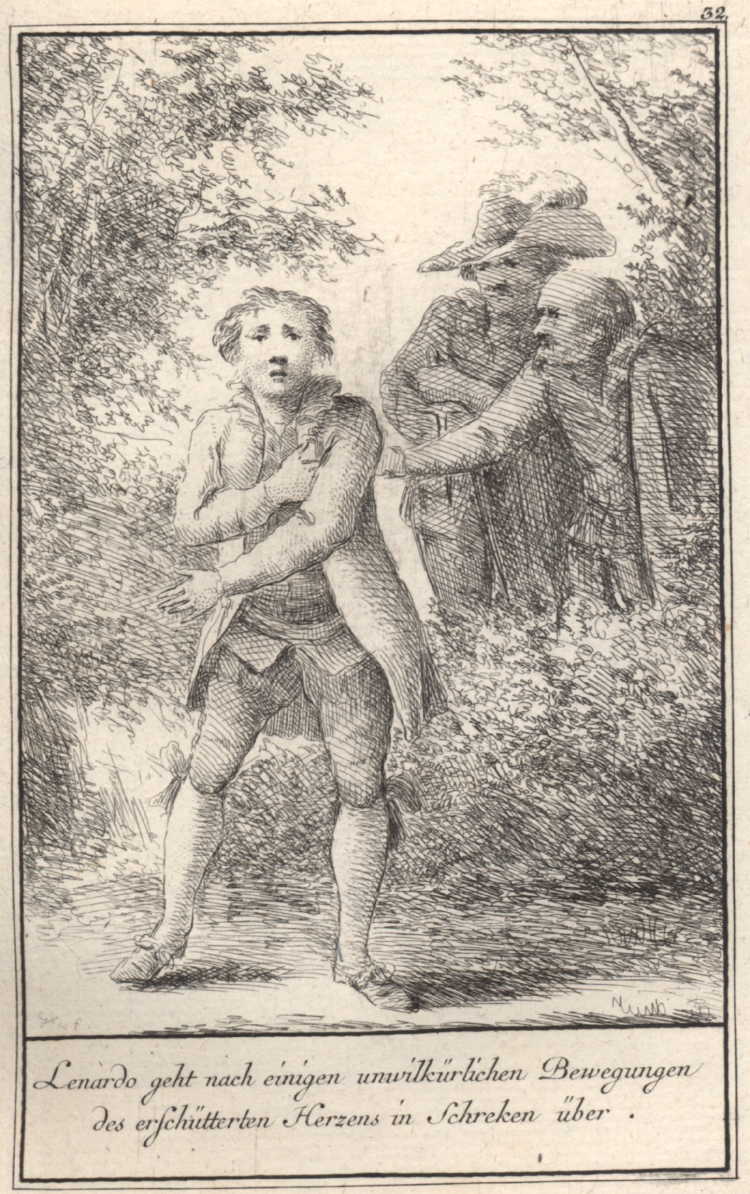Just after the birth of the United States and before the French revolution, the human race started out on two interesting journeys. One was to leave the humdrum two-dimensional flatness of mother earth and take the first steps to conquer space (Brothers Montgolfier's first free flight of a hot air balloon with passengers, 21.11.1783). Another journey, of the same year, was for people on paper to escape, not the flatness of paper, but the confinement of existing on a single image, the confinement of time. In a way it was yet another journey of space exploration, the space beyond the picture frame.
The two events may not be entirely unrelated. Both are a direct expression of the 18th century curiosity to know about, understand and rationally categorize knowable aspects of life, similar to Samuel Johnson's dictionary (1747-1754) or Diderot's encyclopedia (1750-1784).
Visualising a story, or as in Goez's case a person in distress, not via one or a few representative depictions, but with a seemingly unnessecary generosity or overabundance of obsessive variation, belongs to a modern sensibiliy, a thirst for both sensual and material information.
Joseph Franz Freiherr von Goez, was born 28.2.1754 in Hermannstadt (Siebenbürgen), and died 16.9.1815 in Regensburg. Until 1779 Goez was working as a lawyer in Vienna. There he became a portrait painter. From 1779-1783 he lived in Munich, where he wrote and directed the muscial drama 'Lenardo und Blandine' (musical score by P.Winter) after Bürger's ballad, which itself was greatly inspired by a story from Boccaccio's Decamerone (fourth book, first story - Count Tancredo of Salerno).
The success of this performance inspired him to create the sequence 'Attempt of a numerous sequence of passionate Designs for sentimental friends of art and theatre' (during a long stay in Augsburg). From 1785-1791 he was back in Munich, and 1791-1815 in Regensburg. -
Because of his picture sequence, he became known by his contemporaries as 'the German Hogarth'.
|

